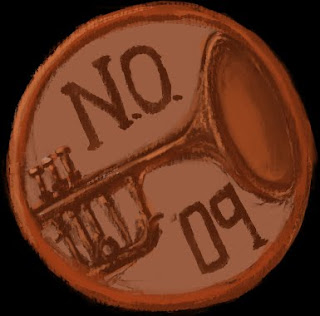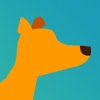 For those who are still gritting their teeth in anticipation over the competition's results, you can rest at ease as they were revealed just a couple weeks ago! I happened to tickle enough of the judges' collective fancies and scored 3rd Place in the ArmorGames Award category! The prize is a generous monetary gift along with a front page sponsorship at ArmorGames.com. Much thanks goes out to the judges, the fans, my Facebook supporters (my one Twitter supporter), my testers, and especially those who enjoy a challenge (which in turn re-mentions people in the former categories).
For those who are still gritting their teeth in anticipation over the competition's results, you can rest at ease as they were revealed just a couple weeks ago! I happened to tickle enough of the judges' collective fancies and scored 3rd Place in the ArmorGames Award category! The prize is a generous monetary gift along with a front page sponsorship at ArmorGames.com. Much thanks goes out to the judges, the fans, my Facebook supporters (my one Twitter supporter), my testers, and especially those who enjoy a challenge (which in turn re-mentions people in the former categories).
The original game can be played here and the ArmorGames version here (though they're 99% identical, so you'll be getting roughly the same cardboard experience).
Also, there is a review (:D!) of my game available here.
I've gotten polar-opposite responses from people regarding the visuals and the gameplay, so I'll save the gameplay chit-chat for another day. In the meantime, let's take a look at some of the artwork for the game.
The whole idea of the narrative was not to tell too much, but to try and keep it from a familiar point of view. That's where I got the idea to tell it through a sort of 2nd grader's cardboard puppet show. I've been watching lots of awesome cardboard videos for the last couple years and even fitted my portfolio website using all cardboard, so I figured it would be fun to continue working on a cardboard world.
Here are a few of my inspiration videos, all very cool stuff: here, here, here, and here
I originally had plans for crazy moving parts and multiple layers of brown parallax, but factors of time constraints, Flash's limited power, and gameplay mechanics had me cut back unnecessary effects. The most important rule that I upheld as much as possible was to suspend the illusion that this game could actually be recreated in real life. That's why the plane you control is held up by strings, why duct tape is seen on seams, why explosions are held up by sticks, and generally why nothing simply appears out of nowhere.
So, where did I begin? Well, first I went to various wholesale clubs in my area and did some free box shopping.

Awesome. So then I ripped them up, scanned them in, and created everything digitally. That part took a few weeks. The loading screen needed to be simple while also following my one rule, so I figured I could have a roll of masking tape roll across the screen, while simultaneously collecting a strip of tape. Doing so reveals the game within as the 4 panel flaps lift up for the first time. I ended up using them as the transition between any two screens for the sake of continuity.
The loading screen needed to be simple while also following my one rule, so I figured I could have a roll of masking tape roll across the screen, while simultaneously collecting a strip of tape. Doing so reveals the game within as the 4 panel flaps lift up for the first time. I ended up using them as the transition between any two screens for the sake of continuity. The title screen was one of the last things I put together, mostly because I wanted to have a good feel of what the rest of the game would be like before I tried to design what the player would ultimately see first (excluding the loading screen).
The title screen was one of the last things I put together, mostly because I wanted to have a good feel of what the rest of the game would be like before I tried to design what the player would ultimately see first (excluding the loading screen). I just wanted to show the Settings screen because those slider buttons took a while to get right and I love how they turned out. :]
I just wanted to show the Settings screen because those slider buttons took a while to get right and I love how they turned out. :] The death screen shows up whenever you get hit by something bad. This happens a lot, so I wanted to have some sort of notation to let you know just what went wrong. Again, to suspend the illusion, the life display at the bottom is held up by metal dowel rods and change their graphic by flipping around.
The death screen shows up whenever you get hit by something bad. This happens a lot, so I wanted to have some sort of notation to let you know just what went wrong. Again, to suspend the illusion, the life display at the bottom is held up by metal dowel rods and change their graphic by flipping around.
As for the rest of the game, I thought I'd do you a favor and show every single asset in the game, namely the bad things and their counterparts underneath. Needless to say, if you're still interested in discovering what lies ahead as you progress through the game, the following image contains every single spoiler in the game... so don't click until you're absolutely ready. For the rest of us, this is a nice chance to not only see how things match up with their happy alter-egos, but you can also see them in detail without having to worry about dodging, charging, and shooting. And if you're wondering why some objects don't have an alternative form, that's because of gameplay design choices, which I'll touch upon another time. I'd normally have some kind of concept art to show where the designs came from, but for the sake of a time-sensitive competition, I just kept messing around with the colors and shapes in Photoshop until I was happy with them. In general, though, the process for each asset was to:
I'd normally have some kind of concept art to show where the designs came from, but for the sake of a time-sensitive competition, I just kept messing around with the colors and shapes in Photoshop until I was happy with them. In general, though, the process for each asset was to:
- Draw the basic shape of the object
- Color & shade for volume
- Add cardboard texture behind and filter it through appropriately
- Readjust colors (as the brown cardboard can make things too red)
- Cut out a cardboard shape around the object (to make it appear like scissors cut it out)
- Fade the color out subtly in areas where the corrugation is exposed
- The drop shadows were added in Flash, with the exception of the planes' wings.





























